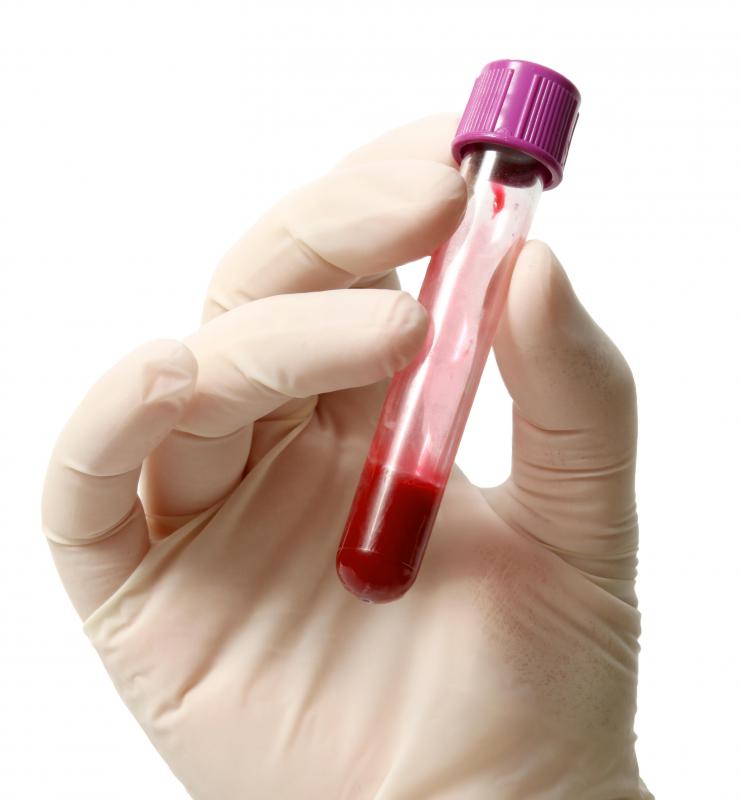At WiseGEEK, we're committed to delivering accurate, trustworthy information. Our expert-authored content is rigorously fact-checked and sourced from credible authorities. Discover how we uphold the highest standards in providing you with reliable knowledge.
What Can I Expect during a Triglyceride Test?
If scheduled for a triglyceride test, you can expect a time of fasting followed by a blood draw. Typically a nurse or phlebotomist, a trained specialist in collecting blood, will ask you to sit down and will inspect the veins on each of your arms. After choosing the strongest vein, the person drawing the sample will swab the needle injection site with an antiseptic to kill germs on the skin's surface. A rubberized band will then be tied high on the arm, just above the elbow crease, so that blood will build up in the veins. Next, a needle with an attached empty vial or a tube leading to a container will be injected into the inside elbow or the back of the hand and blood will be drawn out then sealed and labeled for testing.
Although getting a triglyceride test is basically getting blood drawn, preparing for the test includes fasting and possibly abstaining from certain medicines, supplements, and alcohol. A triglyceride test helps identify the level of triglycerides, a certain type of fat made within the body, in your blood. If you eat an excess of fatty foods or carbohydrates, are overweight, or consume too much alcohol, for example, triglycerides may be high, and your body is likely getting too many calories. Fasting from food for at least eight to 12 hours before the test rids the body of chemicals and allows for the breakdown of foods that could skew triglyceride readings.

A triglyceride test is in many ways an indicator of general health in terms of what healthy and unhealthy fats are present. It helps determine the estimated low-density lipoprotein (LDL) cholesterol reading, the commonly labeled "bad cholesterol," versus the high-density lipoprotein (HDL), the so-called "good cholesterol." Generally, a high LDL reading will indicate a high triglyceride level, both of which are contributors to heart disease, clogged arteries or atherosclerosis, and diabetes, among other conditions. A low triglyceride count can be brought on by thyroid conditions such as hyperthyroidism or through the body's inability to store nutrients. Individuals who suffer from malnutrition often have low triglyceride counts.

When a doctor or other practitioner orders a triglyceride test, you can expect not only instructions about fasting and preparing for the blood draw but also discussions about nutrition and possible indicators he may be looking for or expecting. When the results of the blood analysis are in, there also may be further tests or educational sessions on diet and lifestyle change. Normal triglyceride test results could just mean doing more of what you already do to stay healthy.
AS FEATURED ON:
AS FEATURED ON:














Discuss this Article
Post your comments